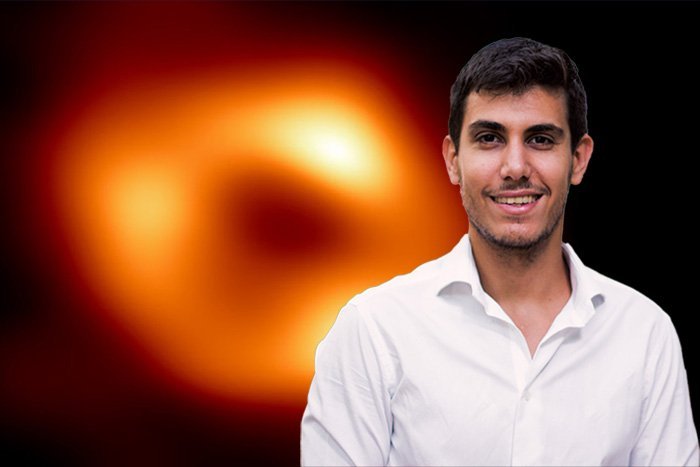Assistant Professor Aviad Levis and collaborators are recipients of funding from the Ontario Research Fund — Research Excellence (ORF-RE) in support of research on black holes. Sagittarius A* Image credit: Event Horizon Telescope Collaboration
will advance efforts by U of T researchers to shed new light on the nature of black holes, a fundamental and mysterious building block of the universe.
The $2 million grant from the provincial government will support the work of Assistant Professor and collaborators in developing innovative machine learning and quantum detectors to enhance the sensitivity and resolution of the next generation of radio and optical telescopes.
With these tools, they hope to improve the imaging of black holes, an extremely challenging task given their distance from Earth and size on the sky. “Imagine trying to photograph a grain of sand in California when you are in Toronto,” Levis explained in a previous Q&A.
The project is being led by Levis and a team of fellow U of T researchers: Bart Ripperda, Ue-Li Pen and Norman Murray of the Canadian Institute for Theoretical Astrophysics, John Wei of the şŁ˝ÇĘÓƵ of Physics and Keith Vanderlinde of the Dunlap Institute for Astronomy & Astrophysics.
“We are thrilled to receive this funding, which will enable us to push the boundaries of technology and uncover new insights into the mysteries of black holes,” says Levis. “Not only is this a fantastic investment by the Ontario government, it’s also a vote of confidence in computational imaging and AI for science.”
Levis, Pen and Ripperda are members of the Event Horizon Telescope (EHT), an international collaboration that captures images of black holes through a network of synchronized radio telescopes that combine to create a virtual Earth-sized telescope.
Black holes, believed to lie at the centre of most normal galaxies, are theorized to be shaping much of the universe as we know it. Nonetheless, they remain elusive and, until recently, directly unobservable. The first black hole images by the Event Horizon Telescope changed that, giving insights into two supermassive black holes for the first time and enabling “horizon-scale science.”
The event horizon is a boundary surrounding a black hole beyond which nothing — not even light — can escape. By observing the bright, hot plasma at the edge of the event horizon, the EHT opens a window into a place where light, space and time behave in unexpected ways. The “extreme plasma laboratory” that lies at the edge of the event horizon is a place where astronomers can test the most advanced theories of physics and sharpen our understanding of the universe, Levis notes.
“To push beyond these first images of the EHT, this project aims to develop both advanced computational methods that harness the power of machine learning and physics and next generation telescopes that rely on emerging quantum optical detectors,” he explains.
Supported by industrial partners, Levis adds the team will create “truly open source, vendor neutral, machine learning technology” and push the frontiers of quantum computing.
This funding is part of a $92 million investment by the Ontario government to support various research projects across the province.

